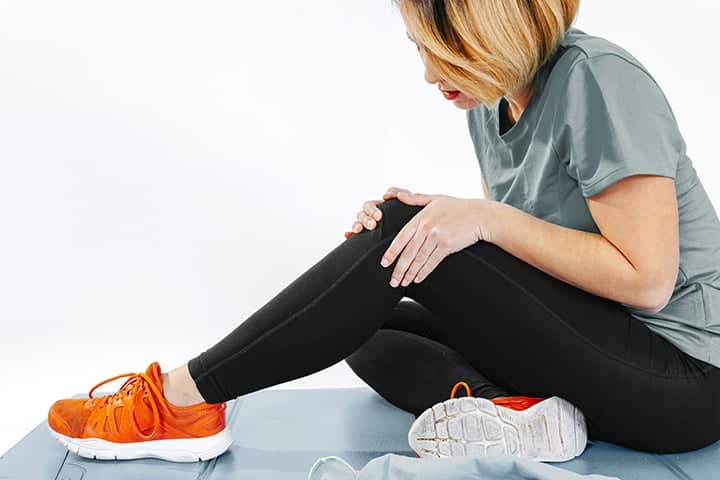Demystifying Arthritis

In keeping with the theme of our previous blog, in this one, we shall be covering another bone-related condition which is very common and often misunderstood: Arthritis.
Joint pain due to swelling in the joint is an extremely common disorder affecting people of different ages and genders, across the globe. What we call as swelling in the joint is medically termed as Arthritis. Derived from “arthro” and “itis”, simply put, arthritis is inflammation of one or more joints. It is not a disease. In fact, it is a symptom of many diseases or caused as a result of ageing or injury.
Generally, the condition involves swelling and stiffness in the joint leading to pain. It can also cause locking of the joint and restrict the range of motion. As the joint weakens, it is more susceptible to injury.
There are many types of arthritis. It ranges from degenerative arthritis caused by age to inflammatory arthritis as an autoimmune condition to infectious arthritis caused due to some disease.
Osteoarthritis, one of the most common forms is caused by degeneration over the years. It usually affects the hip and the knees. The wear and tear of the cartilage, which acts as a cushion between the bones, creates excessive loading on the joint. This, in turn, causes a friction effect as the shock absorption is reduced and can cause the formation of small bony projection called spurs. The joint then keeps getting inflamed resulting in further micro-trauma in the joint space. Pain that ensues makes us load the joint incorrectly especially when we do even simple activities like walking.
Another cause for osteoarthritis is the sedentary posture. Sitting for many hours compresses the cartilage in certain areas. The muscles are not used and they weaken. This causes muscle imbalance and pain. Then the above cycle follows.
Once the cartilage degenerates it cannot be reversed. However, it can be arrested when detected early. Reducing the stress on the joint by correcting the alignment and creating a better muscle balance, helps with how the joint is loaded and distributes the load so as to prevent further damage. This can reduce the pain to a large extent and make one more mobile in daily activities.
Another form of arthritis is an autoimmune condition called rheumatoid arthritis. In this, the immune system attacks the healthy cells in the lining of the joints and it swells up. Different autoimmune conditions like Lupus, psoriasis, scleroderma etc. have rheumatoid arthritis as their symptoms. Infectious diseases like Lyme’s disease, osteomyelitis etc. also lead to infectious arthritis.
Autoimmune and infectious arthritis require medication to a large extent. But the pain can be reduced and mobility can be improved with the help of exercises under the care of an expert. However, osteoarthritis can be completely prevented and if it has set in, it can be controlled with the help of exercise and lifestyle changes.

Many of our clients who have had osteoarthritis have experienced an improvement in their condition by the Pilates workouts. Supriya, whose knees had started hurting a few years back, suffered a knee injury which further aggravated her osteoarthritis pain. She came to Moushu’s Pilates looking for a workout regime which will be mindful of her condition and still allow her to remain fit. Pilates, along with Ariflex really helped improve her knee and prevent further deterioration.

Amrita Shah, who is a regular at Moushu’s Pilates, has Lupus since she was 18 years. All her joints had weakened due to the autoimmune condition and she had to get both her hip joints replaced. Her shoulder joints were also arthritic due to the condition and the medicines she had to take for it. In this background, three years back she injured her shoulder while doing strenuous exercises in a Power Yoga class. That’s when she decided to join Moushu’s Pilates. She believes that Pilates has made her stronger and along with Yoga, it has helped her remain active. By doing Pilates her shoulder has remained stable and has helped her avoid surgery of the shoulders as well. In her own words “the range of motion and strength in my shoulder joints is much more than it was before the injury.”
At Moushu’s Pilates combining the expertise of physiotherapy and Pilates we work to create the balance between loading, alignment and muscle balance. Loading the joints in a controlled environment and strengthening the functioning of the muscles helps prevent further malalignment. The cartilage stays nourished by the Pilates exercises and it arrests the degenerative process which had enhanced due to the stress on it. After assessing the client with respect to posture, alignment and muscle strength along with their lifestyle and activities we make tailor-made programs to suit each individual.
In general, starting with the inner core, as explained in our previous blog, we concentrate on a neutral spine and on teaching alignment. After that, we gradually load the joint and strengthen the muscles.
Some simple exercises that are beneficial for arthritis are:
For mobility:
- Hip twist
- One leg circles
- Feet in straps on the reformer
For alignment:
- Mini squats
- Footwork series on the reformer
For muscle strength and balance:
- Clam
- Side kicks
- Swimming
You can be stronger and prevent your joints from degenerating. Schedule an appointment with Dr.Moushumi Kuvawala to assess your body and find the right regime for yourself.
Read also the myths about Osteoporosis.

Comments
Does pilates help alleviate pain?
Yes it does.
That’s what rehab Pilates is.
Should the provided exercises be performed daily?
Yes. Or every alternate day.